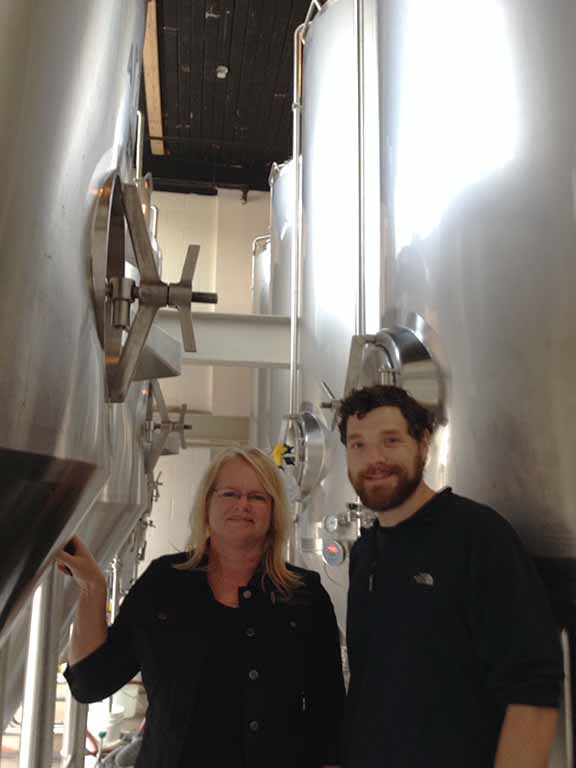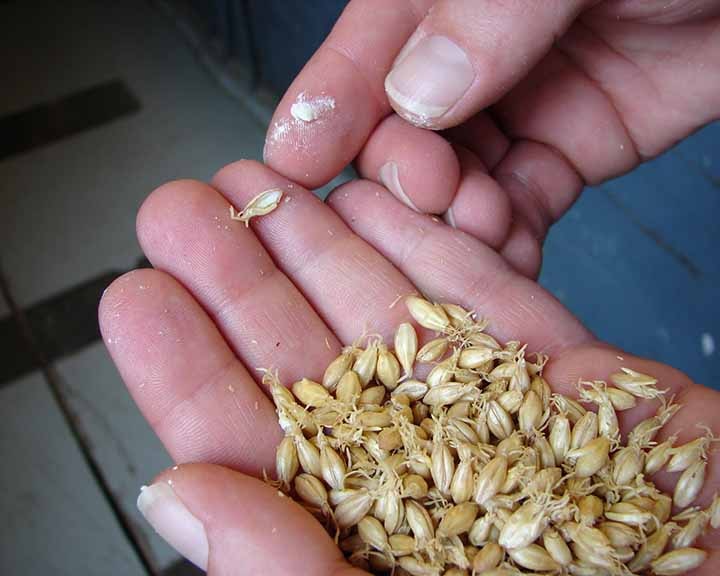
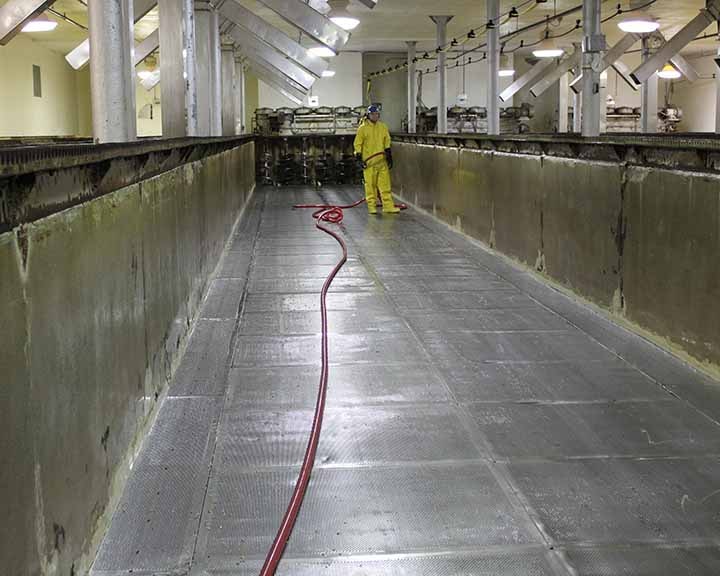
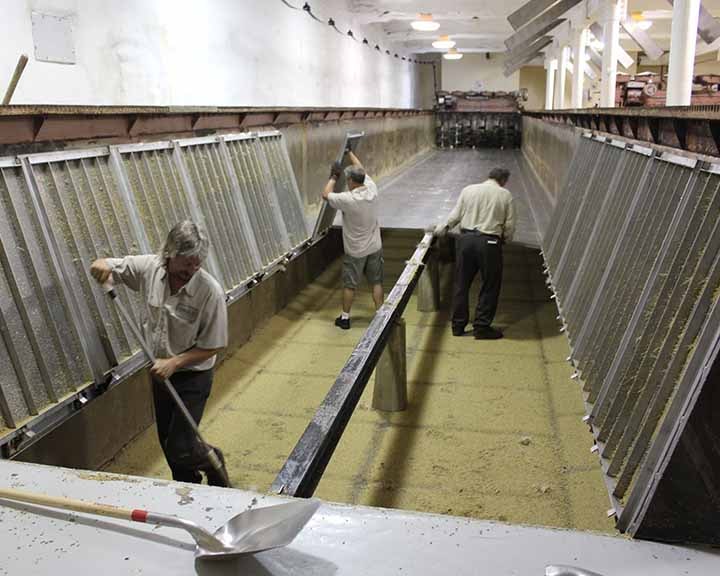
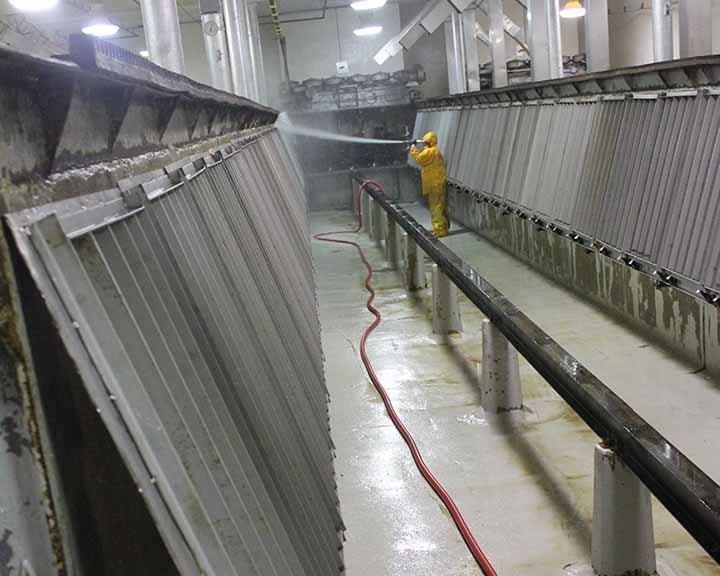
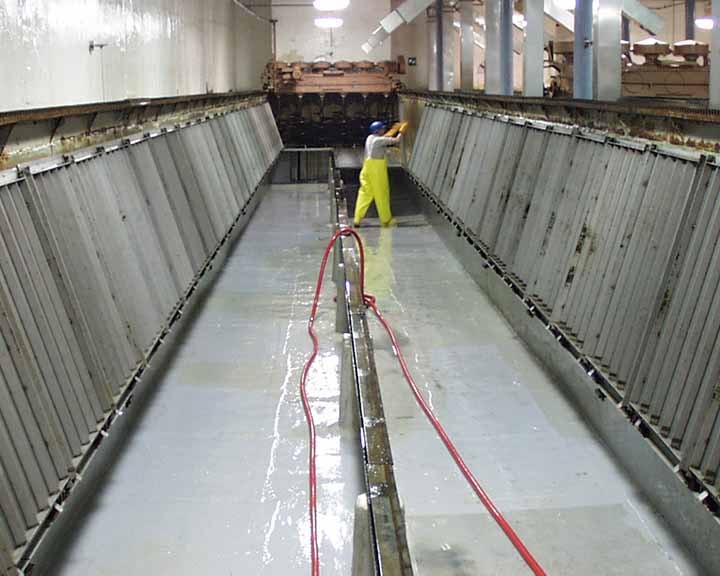
It’s been awhile since the first two blogs about The Briess Malthouses, so here’s a refresher before looking at germination, the next step of the malting process.
Briess operates two very unique malthouses dedicated to producing specialty malts. We refer to them by the Wisconsin city they’re in—the Chilton Malthouse and the Waterloo Malthouse. The first two installments in this series were:
- Part I—Short history of the Chilton Malthouse.
- Part II— Steeping, the first step in the malting process.
So what’s next? Germination! Germination is the second step in the malting process, and germination compartments are one of the most popular stops for customers touring the malthouse because it’s a total sensory experience.
The long compartments are filled with germinating barley, the air is cool and damp, there’s nose overload with aromas of wet grain and cucumber (yup, cucumber) filling the damp air, and we encourage visiting customers to open and munch on individual barley kernels to taste how the flavor changes each of the four days of germination.
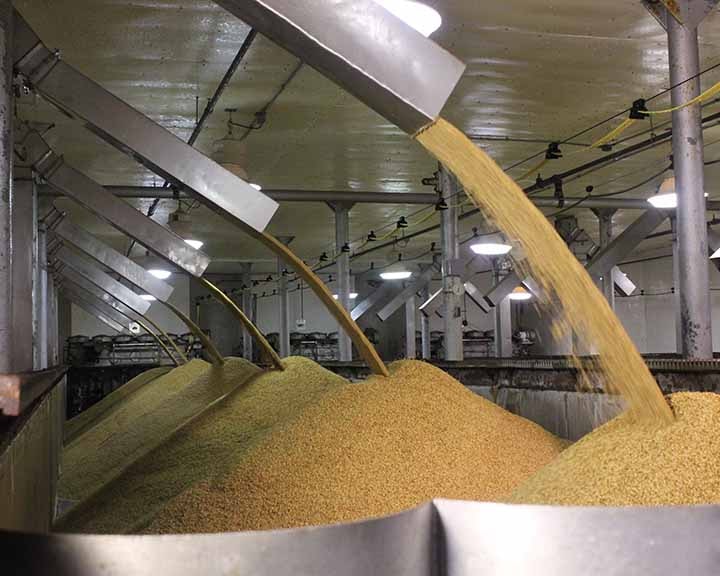
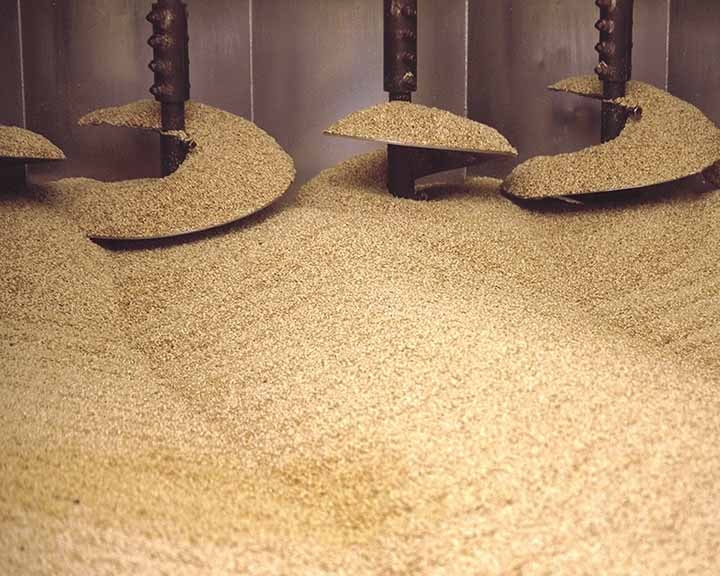
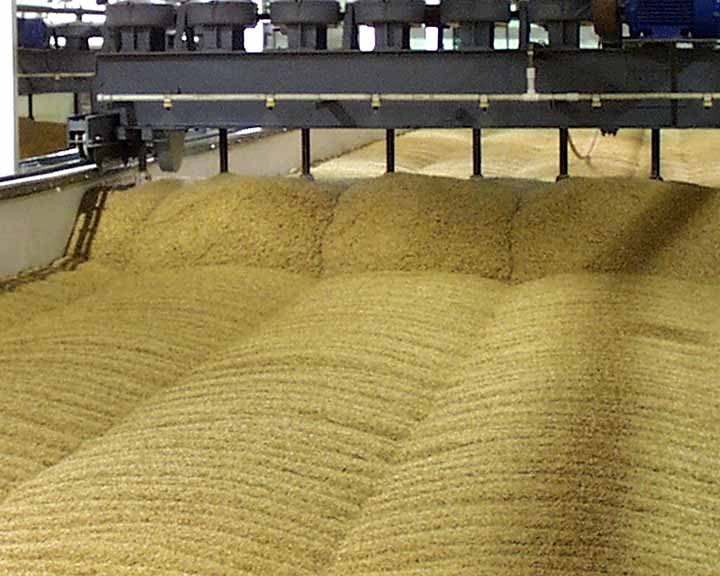
Germination begins with “steep out”, when chitted barley is transferred from the steep tank to the germination compartment. Germination, which began in the steep tank, continues in the compartment where the barley kernel undergoes modification.
Modification refers to the breakdown of the protein and carbohydrates, and the resulting opening up of the seeds’ starch reserves. Good modification requires the barley to remain in the compartment for 4-5 days. Germination is controlled by drawing temperature-adjusted, humidified air through the bed. Turners keep the bed from compacting and rootlets from growing together, or felting.
In the Chilton Malthouse, there are eight compartments: four on the lower level and another four directly above on the upper level. Each compartment can hold up to 60,000 pounds of “chitted” barley, which is very small compared to large malthouses.
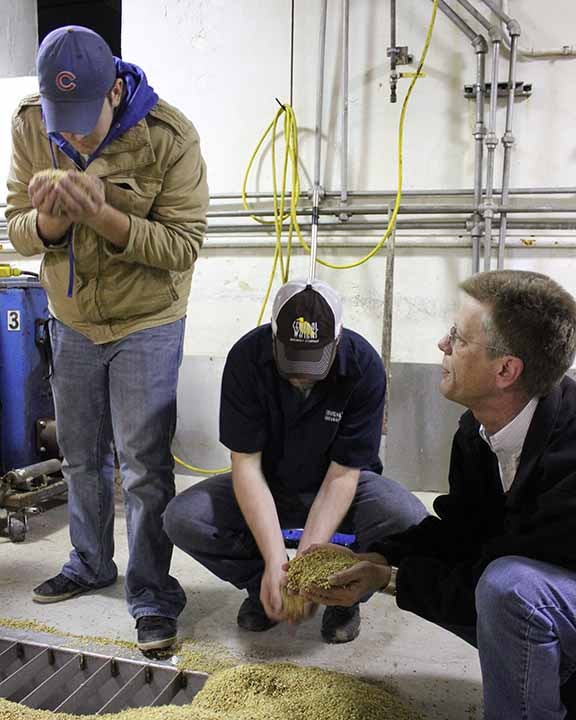
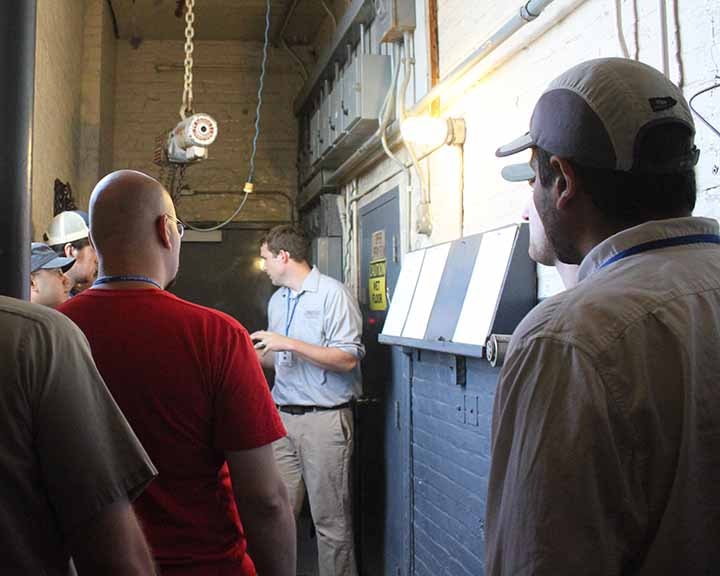
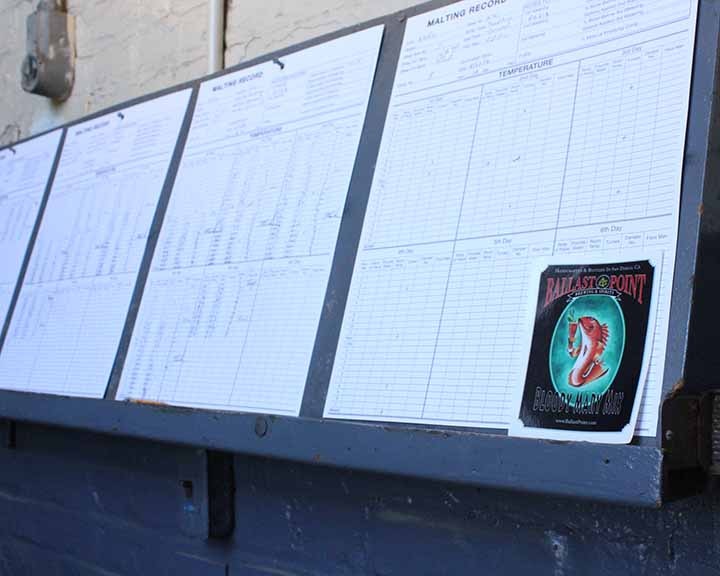
Like the rest of the malting process at Briess, there’s a great deal of hands-on attention paid to the germinating barley. The compartments are manually cleaned between batches and there’s no automatic temperature probing of the germinating barley. Our veteran malthouse staff physically monitors the germinating barley, manually checking the temperature, opening up kernels to check the level of modification, and manually recording progress on a chart. Briess malt truly is handcrafted.
I hope you enjoyed these pictures! Stay tuned for Part IV which will take a look at the final step in the malting process—drying. Cheers!


